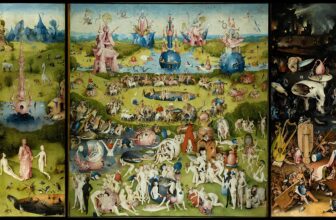
What is the Meaning Behind the Burning Giraffe by Salvador Dali
The enigmatic image of the burning giraffe has captured the imagination of art enthusiasts, critics, and casual observers alike for decades. This surreal and haunting motif originates from the work of Salvador Dalí, one of the most influential and controversial figures in the Surrealist movement. Dalí’s piece, The Burning Giraffe (1937), is a powerful visual representation that intertwines personal, political, and universal themes. To fully grasp its meaning, one must delve into Dalí’s psyche, the socio-political climate of his era, and the symbolic language he masterfully employed.
Salvador Dalí: The Surrealist Visionary
Born in 1904 in Figueres, Spain, Salvador Dalí became renowned for his dreamlike and eccentric art. His works often blended his subconscious fears, desires, and memories with symbolic imagery. Dalí’s surrealism was heavily influenced by the psychoanalytic theories of Sigmund Freud, particularly the exploration of dreams and the unconscious mind. These influences permeate his works, including The Burning Giraffe, which is both deeply personal and open to myriad interpretations.
Dalí painted The Burning Giraffe in 1937, during a turbulent period in European history. The Spanish Civil War (1936-1939) had erupted, and the world was edging closer to World War II. This socio-political unrest, combined with Dalí’s complex inner world, gave rise to one of his most iconic and mysterious pieces.
The Composition: Key Elements and Symbolism
The Burning Giraffe depicts a barren, desolate landscape dominated by two humanoid female figures. One of these figures has drawers protruding from her torso, a motif Dalí used in several of his works to symbolize hidden secrets or the human psyche. Behind them stands a giraffe, engulfed in blue flames, yet oddly unscathed by its fiery plight. This strange, dreamlike scene raises questions about human nature, the subconscious, and the fragility of existence.
The Burning Giraffe
The giraffe, with its slender neck and towering presence, is often associated with grace and serenity. However, Dalí transforms this gentle creature into a harbinger of doom. The blue flames consuming the giraffe are cold and detached, symbolizing destruction without emotion or consequence. For Dalí, the burning giraffe was a “male cosmic apocalyptic monster,” reflecting his fears and anxieties about the impending global conflict. The juxtaposition of the animal’s stoic posture with the chaos of fire creates a sense of surreal unease.
The Female Figures
The two female forms in the foreground are striking in their grotesque distortion. Their elongated limbs and hollowed-out torsos suggest vulnerability and a lack of autonomy. The drawers emerging from their bodies signify the secrets and complexities of human emotions and memories. This imagery echoes Freud’s concept of the unconscious mind, where repressed desires and fears reside. Dalí’s fascination with Freud’s theories is evident in these anthropomorphic figures, which serve as metaphors for the hidden aspects of human identity.
One of the figures is supported by crutch-like structures, a recurring motif in Dalí’s art. These crutches symbolize human frailty and the need for external support to confront inner struggles. This interpretation resonates with the sense of despair and helplessness that permeated the world during the late 1930s.
The Landscape
The barren landscape, devoid of life, serves as a stark backdrop that amplifies the surreal atmosphere of the painting. Its emptiness mirrors the emotional desolation and existential dread that defined much of Dalí’s work during this era. The muted colors further emphasize the bleakness and isolation.
Personal and Political Context
Dalí often described his art as a means of “materializing” his dreams and subconscious thoughts. The Burning Giraffe is no exception. Created during Dalí’s self-imposed exile from Spain, the painting reflects his internal conflict and his response to the sociopolitical upheaval of his time. The Spanish Civil War profoundly affected Dalí, leaving an indelible mark on his psyche and artistic expression.
The burning giraffe can also be interpreted as a metaphor for the destruction of traditional values and societal structures. The flames represent chaos and transformation, while the giraffe’s impassive demeanor suggests a sense of inevitability. This duality reflects Dalí’s ambivalence toward change—both its potential for renewal and its capacity for devastation.
Universal Themes
While The Burning Giraffe is deeply rooted in Dalí’s personal experiences and historical context, its themes transcend time and place. The painting explores universal questions about identity, memory, and the human condition. The drawers, crutches, and flames invite viewers to confront their own vulnerabilities, fears, and desires. Dalí’s surrealism challenges us to look beyond the surface and grapple with the complexities of existence.
Interpretations Across Time
Since its creation, The Burning Giraffe has inspired countless interpretations. Some view it as a commentary on the fragility of human civilization, while others see it as a reflection of Dalí’s personal struggles. The beauty of surrealist art lies in its ambiguity, allowing each viewer to derive their own meaning.
Art historians often emphasize the influence of psychoanalysis on Dalí’s work, interpreting the drawers as a representation of repressed memories and the unconscious mind. Others focus on the socio-political context, interpreting the painting as a critique of war and its dehumanizing effects. The burning giraffe itself has been likened to a symbol of impending catastrophe, a prophetic vision of the devastation that would soon engulf the world.
The Burning Giraffe remains one of Salvador Dalí’s most enigmatic and thought-provoking works. Through its surreal imagery and rich symbolism, the painting offers a glimpse into the artist’s mind while addressing timeless themes of vulnerability, transformation, and existential uncertainty. Whether viewed as a personal confession, a political statement, or a universal allegory, the burning giraffe continues to captivate and inspire, reminding us of the enduring power of art to provoke reflection and dialogue.
In the end, the true meaning of The Burning Giraffe lies not in a singular interpretation but in its ability to resonate with each viewer’s unique perspective, making it a masterpiece of surrealist art that transcends boundaries and generations.
More About Salvador Dali The burning giraffe
“The Burning Giraffe” is a painting created by Salvador Dali in 1937, and is considered one of the artist’s most iconic works of the Surrealist movement. This painting is a masterful example of Dali’s ability to mix reality with fantasy and explore the subconscious mind.
The painting depicts a burning giraffe, a surreal image that is both strange and captivating. The giraffe’s body is elongated and distorted, while its neck twists and bends in an unnatural way. In the background, several other objects are also burning, including a telephone, a snail, and a bottle, further emphasizing the dream-like quality of the painting.
The burning giraffe has been interpreted in many different ways, and there is no one definitive meaning behind the image. Some have interpreted it as a symbol of the burning passion of love, while others see it as a representation of the destruction of nature and the natural world.
Despite its surreal and dream-like quality, “The Burning Giraffe” is also a technically impressive painting. Dali’s use of color and texture is masterful, creating a sense of depth and dimension that draws the viewer into the strange and fantastical world of the painting.
In conclusion, “The Burning Giraffe” is a painting that showcases Salvador Dali’s incredible talent as a Surrealist artist. With its dream-like beauty and exploration of the subconscious mind, it remains one of Dali’s most iconic and beloved works of art. Whether interpreted as a symbol of passion, destruction, or something else entirely, “The Burning Giraffe” is a testament to Dali’s incredible ability to create surreal and captivating images that continue to captivate audiences today.




